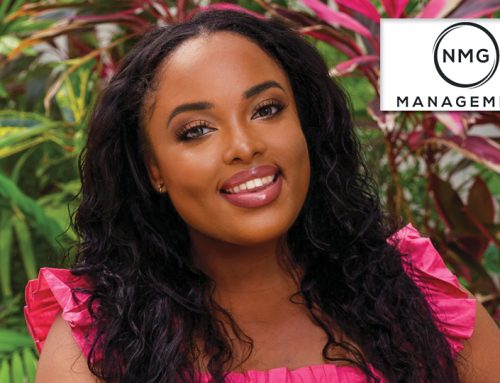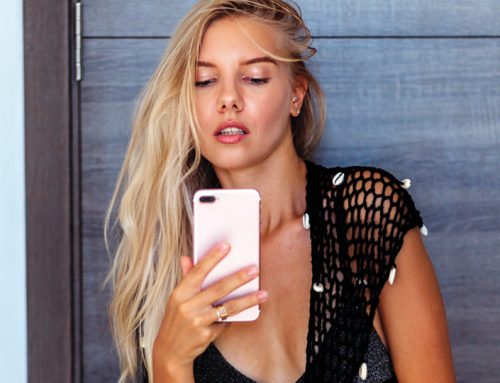A strong marketing campaign is a crucial part of building a business as a creator. And that’s what you are, a business! To be successful in advertising your brand, it is critical to have a solid marketing plan in place. Trying to figure out what kind of marketing will work best for you and your brand can feel overwhelming, but I’m going to break it down for you in a basic, seven-step strategy guide.
Step One: Set a Goal
Consistency and reliability are key when it comes to building trust with your audience.
Before you start your marketing campaign, it’s important to set a goal that is realistic and specific — not just a vague idea like “as many followers as possible.” You need a firm, clear goal to help you track your progress and determine what works and what doesn’t.
For example, with each piece of content that you send out, ask yourself: How many unlocks are you aiming for? How many new subscriptions? How much revenue do you want to generate? How do you get maximum visibility?
Step two: Budget
Time and money are two key factors to consider when creating a marketing campaign. To start, you need to consider your production costs. This includes wardrobe, hair/makeup, lighting and equipment, toys and props, etc. You also need to consider the time you’ll spend editing, posting and advertising. To determine your average hourly rate, consider the number of hours you’ll spend per day and the amount of income you need to recoup your expenses. Save these numbers, because at the end of your campaign, you’ll want to see if you earned back what you spent .
Step three: Identify Your Audience and Get Their Attention
Once you have your budget in place, it’s time to find your audience. Determine which social media channels are best suited for your brand and content. Consider having a personal website to help drive traffic as well.
Study your competition to see how others with similar brands and aesthetics promote their content, and to pick up potential strategies. If there is an influencer you particularly admire, try some of their tactics. Don’t be afraid to reach out and ask them for advice! Or borrow ideas from some of the most successful social media stars. Do some research and find out how they grew their audiences, then try those methods out yourself.
Look to mainstream media for ideas as well. For an example of a hit marketing campaign, look at the new “Barbie” movie. Yes, gentlemen, I’m talking to you too! The teaser ad begins with little girls playing with baby dolls. Then, they look up in awe when they see a shadow. It’s a giant Barbie, a visual representation of her larger-than-life presence on the market. She rocks the core Barbie brand of blonde hair, living the California life and wearing tons of pink, because the campaign grasps the very roots of “Barbie.” It evokes a sense of nostalgia and familiarity.
What makes you want to look up more about a particular show, product, service or brand? That’s what you want to do for yourself.
Step four: Promote the Campaign
The goal you set for your campaign will influence where and how you promote it. There are several ways to promote your content. Social media accounts are best for increasing account engagement and finding new fans; email campaigns for making promo sales, such as offering exclusive content to your most loyal followers; and purchasing shout-for-shouts is best for reaching new audiences.
Step five: Deliver as Promised
Once you have promoted your campaign, it’s important to deliver on your promises. If you promised new content every Monday for a month, then you need to deliver new content every Monday for a month. Consistency and reliability are key when it comes to building trust with your audience. Don’t overpromise and under-deliver; they will remember and it’s hard to earn that trust back.
Step six: Evaluate the Results
After you’ve completed your marketing campaign, it’s time to evaluate the results. Did you meet your goals? What worked well? What did best with fans? Check your data weekly, monthly or after each big promotion to compare and see what worked and what didn’t. This will help you make adjustments for future campaigns and continue to grow your audience.
Step seven: Use Social Media Marketing in Strict Moderation
While social media is a part of numerous marketing campaigns, it should be only a small piece of the big picture. When it comes to social media marketing, there are two distinct approaches to promoting your brand: free or “organic,” and paid social media marketing.
Organic marketing is any activity on social media that does not involve paying for promotion. It is focused on building an online following by using free tools and engaging with your followers.
Paid social media marketing refers to any type of promotion that is influenced by advertising dollars, such as actual advertisements or sponsored posts. Cost-per-click is one of the most common ways to charge for this type of promotion.
Social media is a great opportunity to tell your brand’s story, listen to your audience and make improvements based on their observations. However, it can also be the fast lane to potential shadow-bans. Shadow-banning is a penalty imposed on users who violate the community guidelines on social media. It results in the user’s posts becoming invisible to others on the site, even though the user can still access the community and post comments. The result: your engagement and visibility tanks.
Creating a successful marketing campaign requires planning, effort and commitment. By following these steps, you can reach your target audience, promote your content and achieve your goals. Don’t be a creator with great content and no plan; put in the work and watch your success grow.




